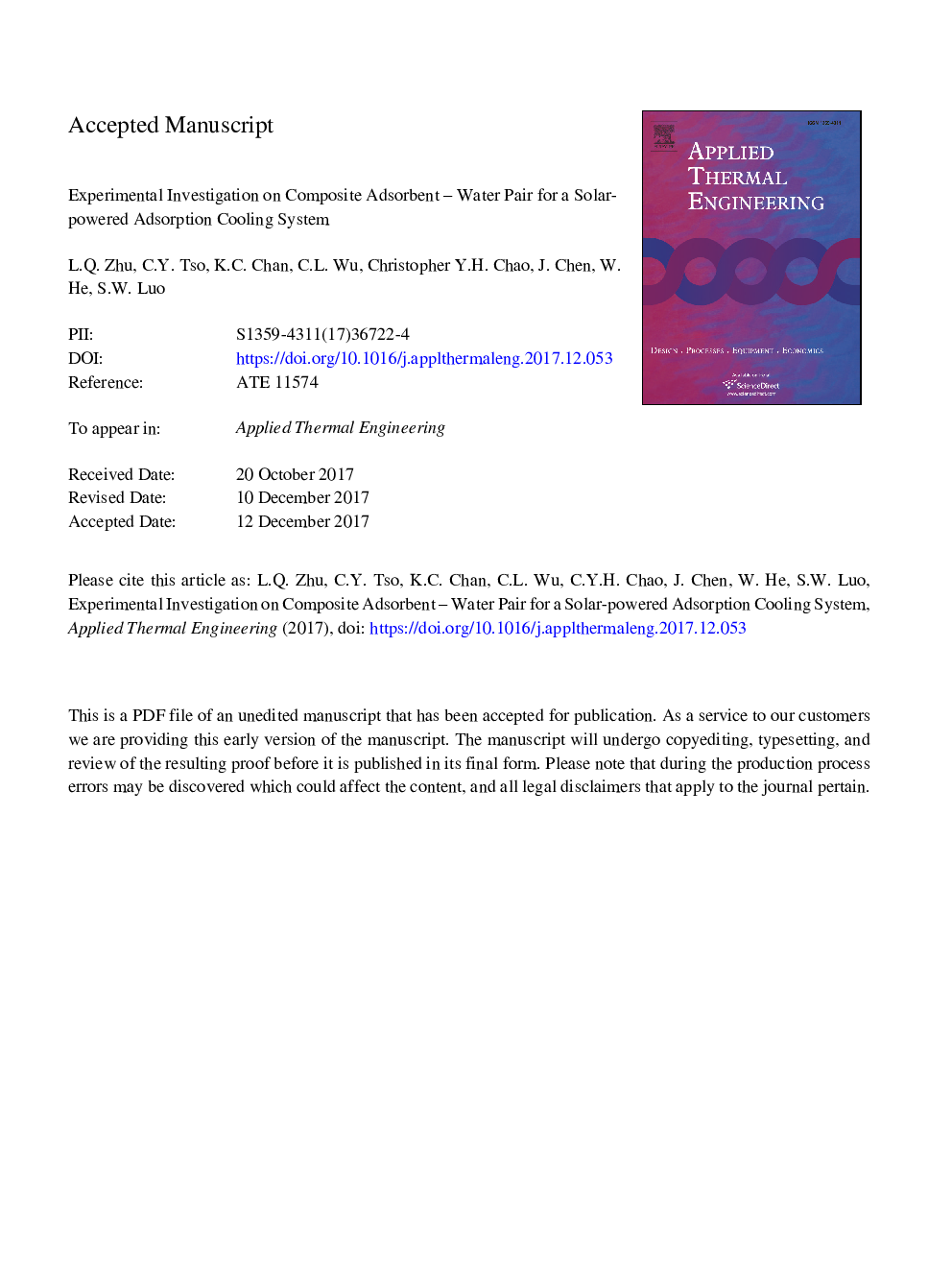| Article ID | Journal | Published Year | Pages | File Type |
|---|---|---|---|---|
| 7046246 | Applied Thermal Engineering | 2018 | 45 Pages |
Abstract
In this study, a solar-powered adsorption cooling system (ACS) using vehicle radiators as an adsorbent bed was built and the system performance was studied experimentally in the Guangzhou climate. 6 single-glazed flat plate solar collectors with the total area of 12â¯m2 were utilized to collect solar energy. Zeolite 13X/CaCl2 composite adsorbent - water was used as the adsorbent - adsorbate working pair. The composite adsorbent was coated on the fins of the vehicle radiators using an electrostatic coating method. The results show that an adsorbent coating layer with a thickness of 0.5â¯mm was evenly distributed, and strongly adhered. The effect of the duration of the pre-heating phase and solar collector area on the cooling performance of the ACS was investigated. A pre-heating phase of 2â¯h was proposed and a minimum area of solar collectors of 6â¯m2 was recommended for a 1-2â¯kW scale ACS. A specific cooling power (SCP) of 208.2â¯W/kg of the ACS and an energy efficiency ratio (EER) of 4.5 driven by solar energy were achieved with a pre-heating phase of 2â¯h, and a maximum solar intensity of 880â¯W/m2.
Related Topics
Physical Sciences and Engineering
Chemical Engineering
Fluid Flow and Transfer Processes
Authors
L.Q. Zhu, C.Y. Tso, K.C. Chan, C.L. Wu, Christopher Y.H. Chao, J. Chen, W. He, S.W. Luo,
